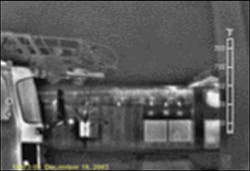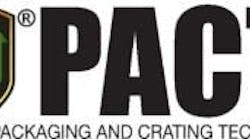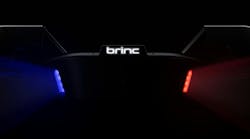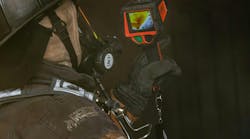It has been nearly two years since this column examined the foundation of any successful incident: good size-up. The thermal imager (TI) is frequently purchased with the promise of saving lives, since it allows firefighters to "see" through the smoke and find victims faster. But proper use of a TI from the beginning of an incident can help keep firefighters safer and reduce property loss.
Essentials
As with any other TI application, planning and practice are the keys to effective usage. Because the transition at an incident from size-up to action is often rapid, there may be little chance to "back up" and start over with a TI once a size-up has begun without it. To prevent missed opportunities, consider the following:
2. Plan TI placement on apparatus carefully. TIs in exterior compartments or in the trunks of cars are not often used. The old adage, "out of sight, out of mind" applies directly. An equal amount of planning must go into deciding which companies receive a TI. While the squad company might be assigned for most incidents, if it arrives fifth on the scene its TI cannot help the first-in engine.
3. At structure fires, part of a quality size-up is a "walk-around," normally done by the company officer when the structure's size and local terrain permit it. The walk-around is the officer's opportunity to interpret the structure and the smoke from the fire, as well as look for hazards hidden from the initial side of approach. Using the TI in conjunction with the officer's eyesight will help identify construction features, as well as hidden fire.
4. Use the TI even when the incident seems "obvious." While most situations truly are as they appear initially, the ones that have hidden surprises are the most dangerous. The TI may give the size-up officer just one more piece of information that could change his tactics or strategy, possibly preventing a tragedy.
Practice Makes Perfect
At structure fires, two of the most significant size-up applications are locating hidden heat sources and identifying critical construction features. One's success in these applications is hindered by environmental heat, such as that caused by the sun, and construction features. At various times of the day and in all four seasons, practice analyzing buildings near the firehouse. Notice the effects of the sun and weather on the image, as well as the impact of environmental changes occurring inside the building (heat during winter; air conditioning in summer).
Remember to consider how building construction affects what is displayed on the TI. Firefighters can learn what a "normal" building looks like under non-fire conditions by examining local structures and comparing their construction features. This hands-on experience gives them the basic knowledge for building comparisons and evaluations at fire incidents.
Table Talk
While the "chef of the day" is preparing dinner, company members can discuss non-fire size-up applications for thermal imaging. At hazardous materials incidents, TIs can help determine how much material is in sealed containers. They can also help determine the point of leakage and the direction of travel for the material. At a motor vehicle accident, a TI-assisted size-up can help identify where hidden victims may be located, as well as whether there are fluid leaks on the roadway.
As always, remember that the TI is not an x-ray machine; it generally does not "see through" anything. There are limitations to how a TI can and will perform in certain situations, and firefighters must always keep these in mind when they evaluate a given image.
Final Report
A good size-up can help fire companies start their operations with the upper hand. The additional knowledge that a TI can give to the size-up officer may help him or her deploy companies more or less aggressively, or even alter their path of entry and advance. This extra knowledge can help bring the incident to a successful conclusion more rapidly, while keeping firefighters safer.
To read a few "real-life" examples of how a TI helped with an incident size-up, visit the Technology section of Firehouse.com.
Jonathan Bastian is a thermal imaging training consultant for Bullard. He is certified as a thermal imaging instructor by the Law Enforcement Thermographers' Association (LETA), the international public safety organization specializing in thermal imager certification and training. He is also the author of the Fire Department Training Network "FireNotes" book, Thermal Imaging for the Fire Service. He is a member of the NFPA Technical Committee on Fire Service Training. Educated at Brown University and licensed as a high school teacher in Illinois, Bastian served 12 years on the North Park, IL, Fire Department, including the last three as a captain. As health and safety officer, he led the development and implementation of the department's rapid intervention team SOG. Bastian is a certified Fire Instructor I and Firefighter III, and he spent 12 years as an EMT-I/D. He has taught classes on thermal imaging, rapid intervention teams, and search and rescue operations. He is currently a public safety official in Central Kentucky. If you have questions about thermal imaging, please send them to [email protected].






